Yes, it is a new product. Of course, I offered it first in Europe. Shipping to the USA became somewhat more complicated (and expectedly noticeably more expensive) since I moved to Germany because of the war in my native country. Thus, I needed to collect all items for the US and ship them later together.
Nevertheless, production of metal etched parts still takes place in Ukraine, despite of all this ongoing disaster.
Why I did not announce it here on the forum yet? There is a reason: I needed to wait until all sellers add this product to their websites in order for the customers to be able to order them.
Although there is a dedicated thread about my products available for sale in the US:
azlforum.com/thread/1936/zmodell-products-on-sale-usa, I will reveal some more technical details about this new item here in this thread.
I always pursued an idea to offer something exclusive in Z scale - something that does not exist on the market at all either does not offer the same quality I can achieve. The idea of making these chains was pretty trivial: for my own modelling needs, I was looking for the chains that should be as small as possible in order to be as close to the prototypical Z scale dimensions as possible.
First, I tried to find them among jewelry items - some very thin chains indeed exist in this area, but all of them are still too thick to fit in our scale. I have seen some chains made with photo-etching technology, but they all were too big too, and fitted only to larger scales like H0. After thorough researching, I realized that the only way to get them is to make on my own. Since it is impossible to make such small chains from real links (either it will be enormously difficult and expensive), I decided to develop a good prototypical imitation from etched metal.
I experimented with different thicknesses and came to conclusion that the optimal value for the material is 0.15 mm. There is a rule in photo-etching technology: the minimum width of the element should not be smaller than material thickness. Since I planned to use half-etching, 0.1 mm thickness would be too small for the chains to be usable - they would tear too easily with a smallest tension. Thus, minimum width of element should have been not thinner than 0.15 mm in my case.
Furthermore, there are different types of Nickel Silver alloys that have different properties. I decided to use Cu81Ni19 alloy instead more common Cu65Ni15Zn20, since the first one is more flexible and more resistant to breakage. This is very important for such things as chains that are surely supposed to be bent according to different usage scenarios.
My calculations showed that the minimum feasible width of the chain is 0.5 mm. Of course, it means 11 cm width in 1:1 scale, but we should accept the fact that photo-etching technology has its own limits too - making such complex structure as chain with smaller dimensions would be too difficult (and not justified economically). Also, there is a rule in scale modeling that allows increasing the size of smallest elements in order to make them more visible. For example, prototypical width of handrails in 1:220 scale should be around 0.1 mm, but they will be barely visible at all with such a thickness; thus, manufacturers use thicker rods for imitating them.
This drawing of chain links shows intricate structure of my photo-etched chains. Note that flat links are half-etched and have a thickness of 0.075 mm, while vertical links have full thickness of 0.15 mm. It creates a very realistic look. Half-etching is in blue color, and full thickness is in red:
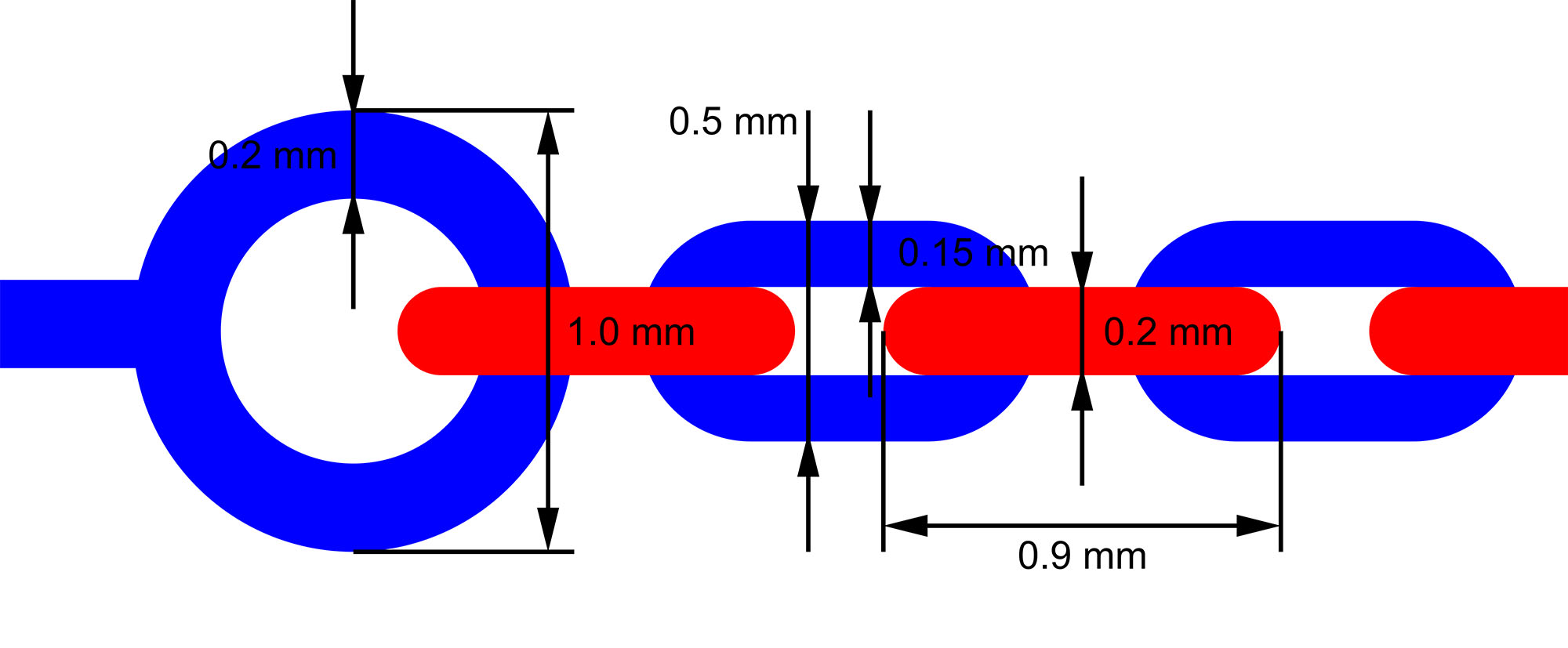
The next question was to choose the right length. I pursued one more important goal: the chains should not have any supporting pins along the whole length - the common feature for all etched parts. It would be too difficult for the customers to remove these pins from such small and delicate parts.
Making too long chains without supports (around 10 cm) first of all would mean significantly higher output of defective parts and higher price for fault-free parts as a result. Additionally, photo-etching technology sometimes shows unwanted effect of over-etching very thin parts in their centers.
Considering all these factors, I chose the optimal length of 50 mm, which equals to 11 meters in 1:1 scale. I also decided to add 1 mm end rings - just in case if someone needs them. Of course, they can be cut very easily if not needed.
Here are the pictures of these chains in the frame. They come in 10-piece sets:



In real life, chains look extremely intricate and prototypical. Here is a usage sample - industrial wooden crate secured with them on German heavy-duty flatcar. As you can see, the chains are even thinner than the stock handrails on the car:


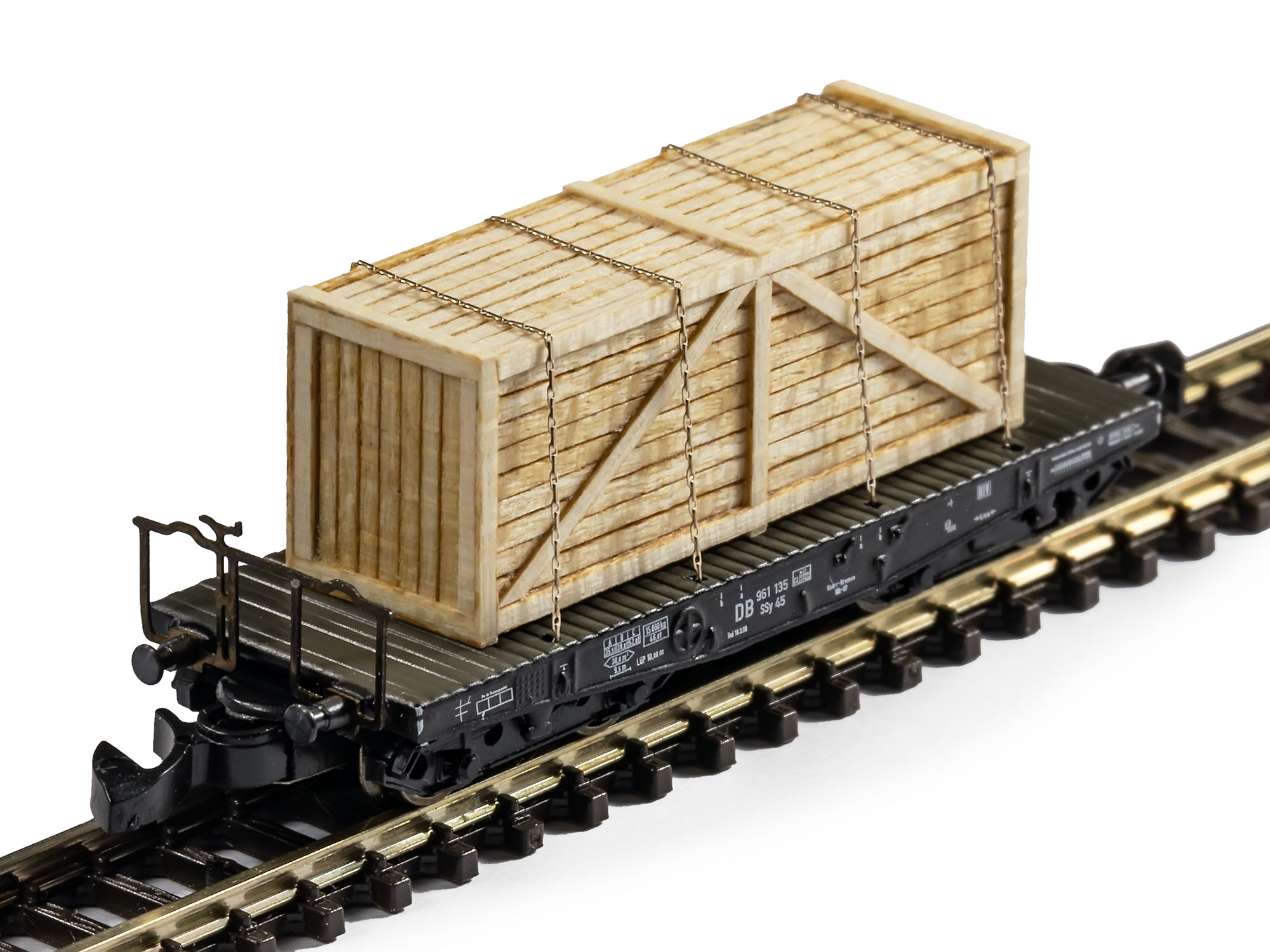
I also used them in my other products - industrial wooden crates which can be used as universal loads for different types of flatcars:
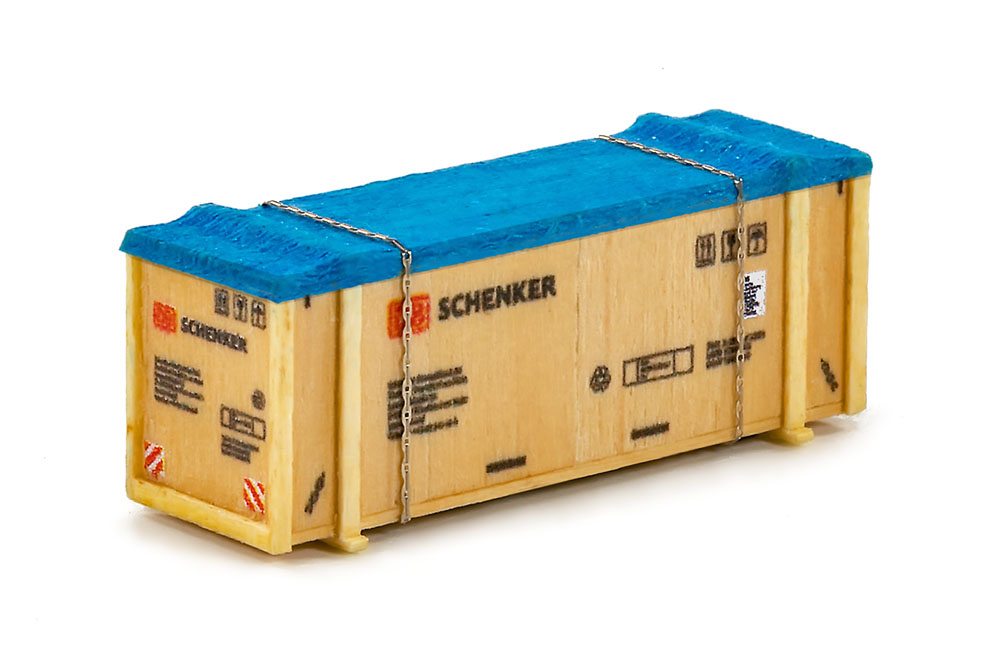
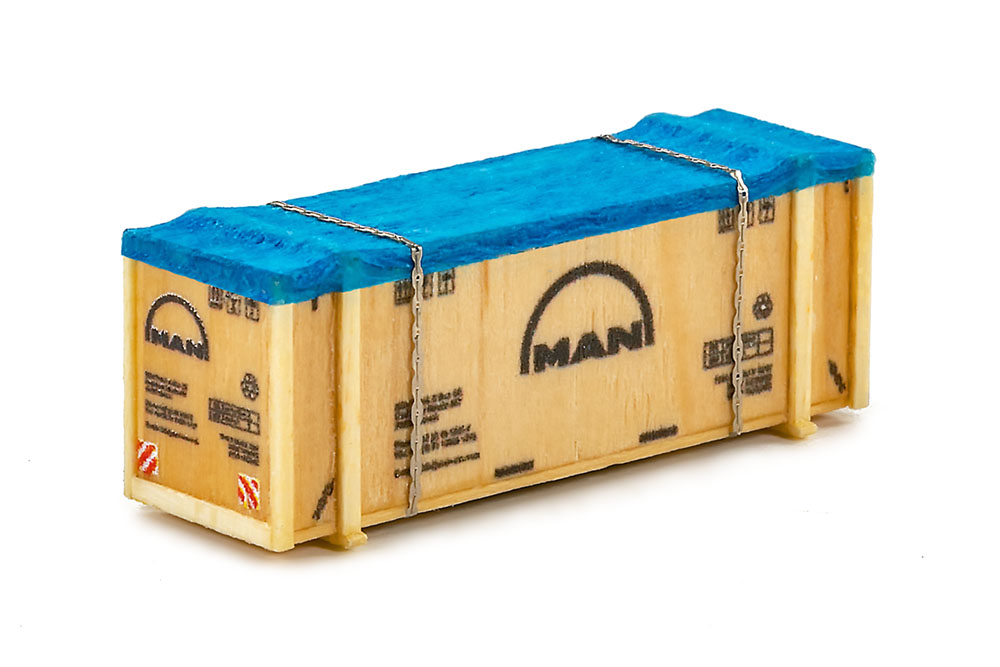
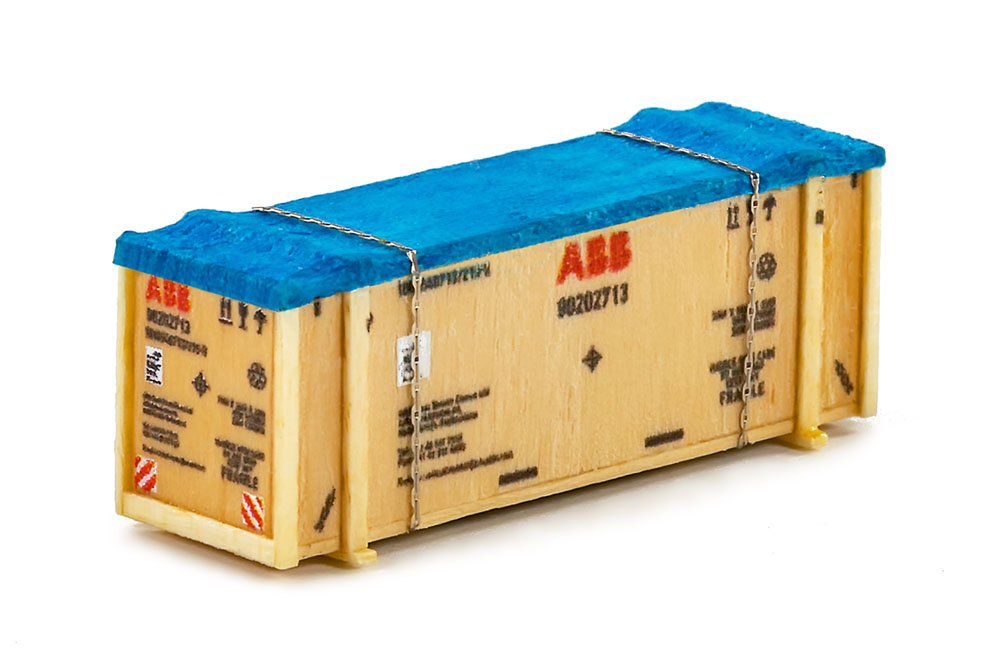
I do not offer these in the USA, as they are uncommon here and also have a lettering for European shipping and manufacturing companies. However, if someone is interested in them - please inquire.
And yes, you are right: while these chains may be a very little out of scale in Z, they for sure will be absolutely true to scale in N!
Best regards,
Alex